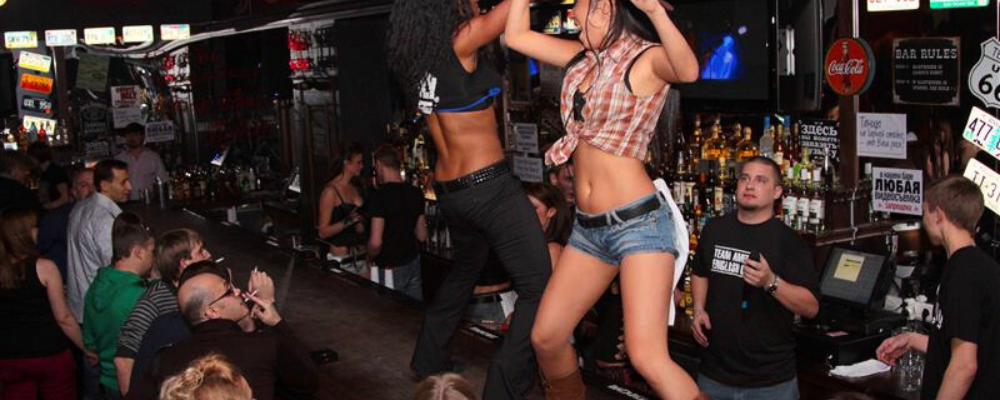While dancing on bars across America occurred with greater frequency in the past and was even glamorized by the movie Coyote Ugly in 2000, there is a good reason why most establishments across the country do not allow such behavior to occur anymore. Allowing patrons and staff to stand, dance, or perform on your bar top can be very dangerous and can create an unacceptable risk.
ICC was recently called to defend an insured in a mountainous area of Colorado. Under previous ownership of the bar, it was a regular occurrence for patrons and staff to get on top of the bar to dance and perform. For years, it was known by locals and tourists that this establishment was a place where you could get on the bar without any consequence. However, when our insured took over ownership of the bar, they implemented a policy that barred patrons from getting on top of the bar.
Although patrons were not allowed on the bar any longer, staff and local promotors were occasionally allowed on the bar for various promotions and activities. While this policy was communicated to staff, there was no signage in the bar, and it was only communicated to patrons when they attempted to climb on top of the bar. As you can imagine, patrons who were familiar with the prior policy may not have fully understood that things had changed until it was too late.
On one such night, beverages were being enjoyed throughout the bar, music was playing, and patrons were dancing. One patron, after gaining some liquid courage, decided to climb to the top of the bar to dance. Bar employees reacted quickly and asked the woman to get down. Unfortunately, the woman on the bar was not as coordinated and gracious on her way back down to the ground.
The Plaintiff, a woman who was standing just below the patron on the bar, looked up and asked if she needed help getting down. She abruptly took Plaintiff up on her offer and came crashing down on top of her.
As a result of the incident, Plaintiff sustained an ACL avulsion and meniscus tear to her left knee that required surgery and resulted in $100,000 in medical expenses. Despite her own assumption of risk, Plaintiff decided to file a lawsuit against the insured and denied any personal responsibility for her own injuries.
The case proceeded through years of litigation that involved significant and time-consuming discovery and depositions of witnesses and current and former employees. Through the litigation process, we learned that the insured had failed to preserve the one piece of evidence that could really tip the scale at trial: the surveillance video.
The insured apparently watched the surveillance video after the incident occurred, thought it might be important, but failed to preserve it. Because of this, the insured faced an adverse jury instruction that would allow the jury to infer that the video contained evidence that was not favorable to the insured.
To further complicate matters, we had testimony that the insured only loosely followed their own policy concerning people on the bar. Despite these obstacles, ICC was tough in their negotiations and made a reasonable final offer. Plaintiff, who was enamored by the thought of a large recovery, rejected our offer, and the case proceeded to trial.
At trial, the insured’s defense attorneys masterfully defended the insured for an entire week. Thankfully, it only took the jury four hours to realize that the insured should not bear the majority of the fault. In fact, the jury found that the unknown woman, who fell from the bar onto the Plaintiff, was 60% at fault, Plaintiff was 25% at fault, and the insured was only 15% at fault for the incident.
The jury disregarded Plaintiff’s request for an award of $600,000, and entered a full verdict of $155,723, with the insured being responsible for $30,605 of that amount when fault and interest were accounted for. We consider this to be a “technical defense verdict” and a great outcome under the circumstances.
Although it may seem obvious that you can prevent this from happening at your establishment by simply not allowing patrons or others to stand or dance on the bar, there are a few things you can do to ensure everyone, employees and patrons alike, are all on the same page.
If you currently allow people to get on top of the bar, you should immediately implement a new policy that does not allow this to occur. Make sure the new policy is communicated to all employees and enforced with no exceptions. You should also post signage, so patrons are aware of the change in policy.
Anytime an incident does occur, preserve any surveillance you have from that day, document any observations that were made by you or any employees on duty, and immediately report the incident to the proper authorities, your agent, and ICC.
It is important that you preserve any other information about the incident, such as incident reports, payroll records, receipts, photos, videos, and record the names and contact information of any patrons who may have witnessed the incident.
If the insured from the example above had followed most, if not all, of these steps, the incident may have been prevented, or the jury may have rendered a complete defense verdict.
Even with the best policies and procedures in place, it can sometimes be impossible to prevent incidents from occurring. Rest assured, when these incidents occur, ICC will be your ally and will vigorously investigate and defend your interests. It’s what we do. It’s who we are.
For more information about insuring your business with ICC, use our Find an Agent search and locate an agent in your area.





